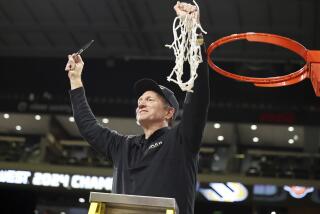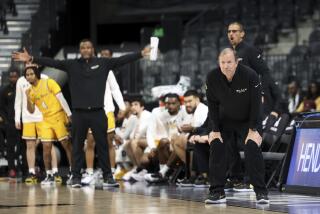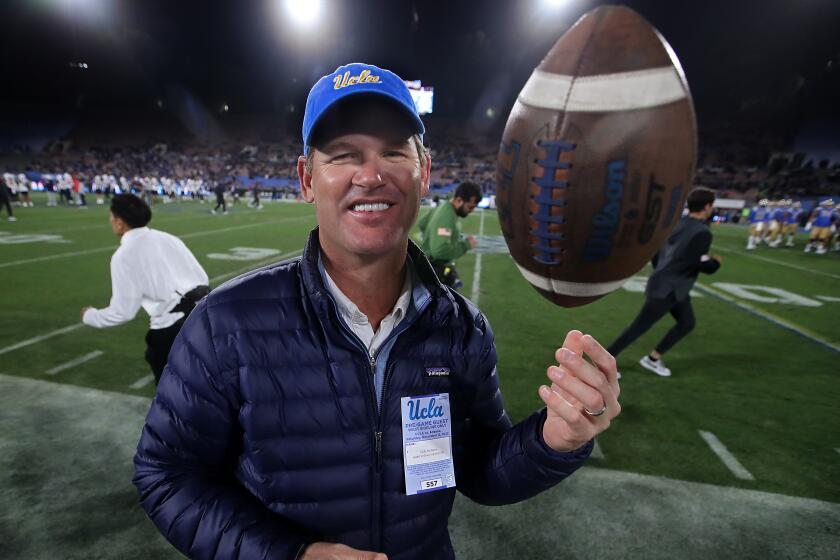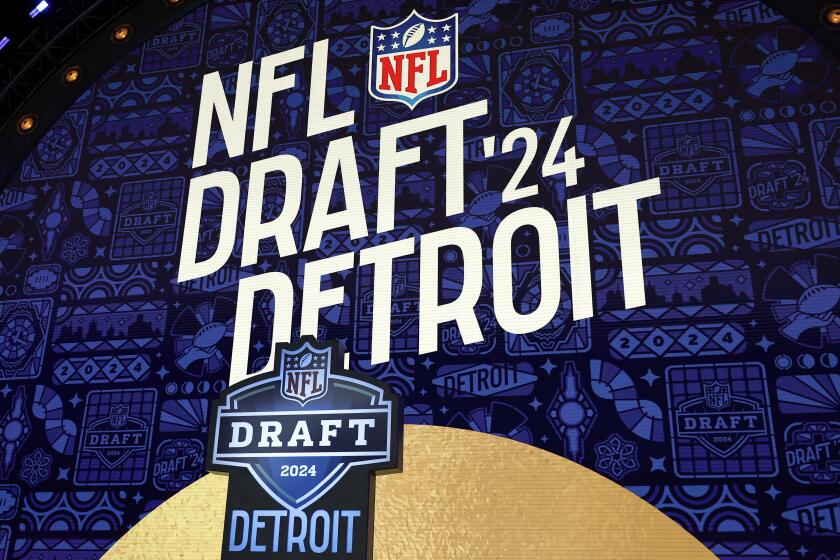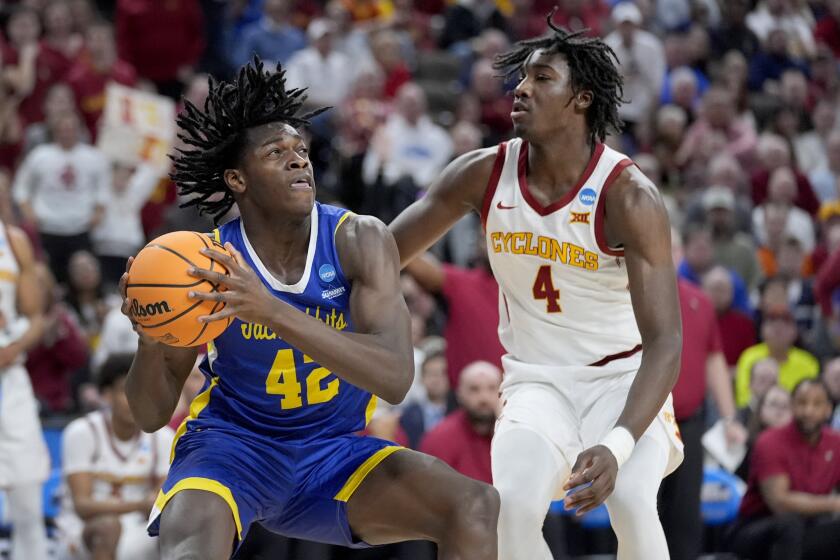UCLA faces a Gonzaga basketball team that now can’t escape expectations
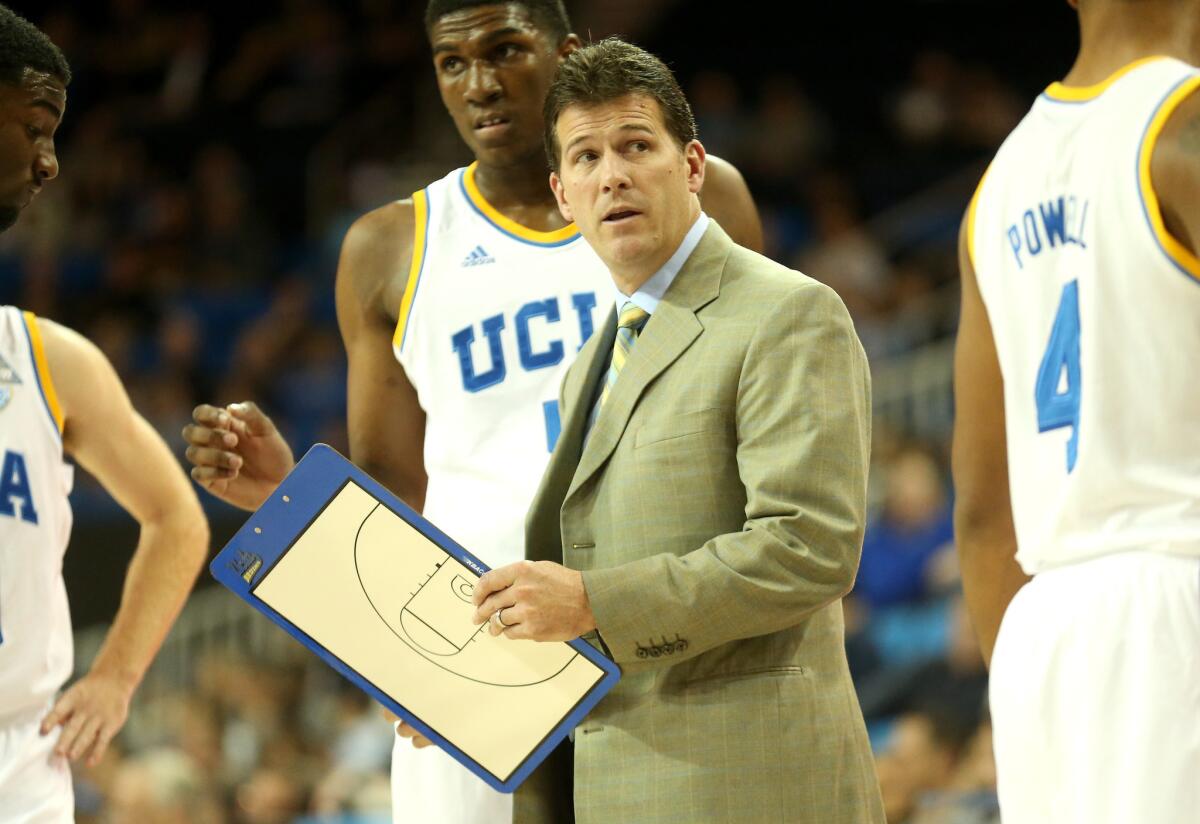
Dan Monson is the basketball coach at Long Beach State, but he still fields phone calls from athletic directors and coaches around the nation wanting to know about Gonzaga.
Or, more specifically, how have the Bulldogs done it?
How did Gonzaga pivot from a Cinderella run to a regional semifinal in 1999 to becoming a perennial college basketball power? How has it landed regularly on national television? And why, when a standout player such as Byron Wesley chooses to leave a place like USC, is his first choice the little Jesuit university in eastern Washington?
“I just knew that they had a winning tradition,” Wesley said.
Just about every college basketball player knows that. Wesley was 5 the last time Gonzaga missed the NCAA tournament. The Bulldogs have made the field 16 consecutive seasons — a span over which only Duke and Kansas have won more games.
McCarthey Athletic Center, the Bulldogs’ home court, has been sold out every game since opening in 2004, and students camp out in tents to be in line for big games.
Basketball has transformed the university, swelling the school’s endowment and applications and helping to fund new buildings, according to Athletic Director Mike Roth.
The ninth-ranked Bulldogs will be favored when they visit Pauley Pavilion to play UCLA on Saturday night.
“They’ve just been on that kind of a roll that few institutions across the country have been able to copy,” said William Husak, the athletic director at Loyola Marymount, a fellow West Coast Conference school. “But many of them are envious.”
Gonzaga’s success has put pressure on conference rivals. Since Gonzaga’s 1999 tournament run, rival WCC schools have gone through an average of nearly four head basketball coaches.
“It’s the benchmark,” said Monson, who was Gonzaga’s head coach in 1999.
Gonzaga has been so good for so long that it is easy to forget what it came from. When Monson and current Gonzaga Coach Mark Few were assistants, they used to save money by crashing on friends’ floors and couches while recruiting. Back then, the small, home arena was rarely filled, and for away games the players packed into vans because the school couldn’t afford buses.
“It was really a mom-and-pop store,” Monson said.
Monson and Few say the blueprint is no secret, yet few have been able to repeat it.
You need elite players, though that can be difficult when you’re a mediocre mid-major tucked in the Northwest. You need coaching continuity, though it can be tough to keep your assistants when you have limited financial resources. You also need fan support, a tough nonconference schedule and, at first, some luck.
When Roth was named acting athletic director in 1997, Gonzaga had none of the above. No one could predict the ceiling, but Roth and the basketball coaching staff agreed it could do better.
Roth’s first move was psychological. He changed the Bulldogs’ logo and tweaked the color scheme. It was an announcement: This is a new Gonzaga.
At first, the coaching staff scoured nearby talent. When possible, they added junior college transfers and an occasional international player. They looked for unselfish players who fit the system. They didn’t have to worry about NBA departures.
Few and Monson matured as assistant coaches in the program, but by the end of head coach Dan Fitzgerald’s tenure, both had become coveted by opposing schools. And the pay wasn’t enough to keep them. Eastern Washington offered Monson its head coaching position, and he was ready to take it.
Give me a night, Fitzgerald asked. The next morning, after talking it over with his wife, Fitzgerald told Monson he’d be retiring soon. After that, Fitzgerald promised, the top job was his.
Later, Roth and Monson made the same deal with Few. When Monson left for Minnesota after the 1999 NCAA tournament, Roth recalls the search process: He called the school’s president to tell him Monson was leaving. What do we do next? the president asked.
“What do you mean, Father?” Roth said. “This deal’s done.”
The people who could sustain excellence were already in place, but everyone involved says the 1999 tournament run was the spark that ignited Gonzaga’s transformation into an elite program. The Bulldogs defeated Minnesota, Stanford and Florida before losing by five points to Connecticut, which went on to win the national championship.
During the tournament, Monson said he didn’t realize what a phenomenon Gonzaga had become. Back in Spokane, where the university is a community centerpiece, just about every window downtown featured a Gonzaga basketball poster.
When the team returned home, Monson said, “the bus could not get on campus. … It was like parting a sea of people for that bus to get on campus. And I’m like, what happened? Why are these people all here?”
When Monson left in the off-season, the school was prepared. After the tournament, Few said he could sell recruits on winning. Some were still local products, such as Adam Morrison, who went to a high school near campus. Others came from as far as Paris, such as Ronny Turiaf.
Once the Bulldogs continued to win, the WCC landed a deal with ESPN, which will televise 16 Gonzaga games this season. The success led to new revenue sources, which helped build a new arena.
Ten years ago, Few remembers walking through an East Coast airport and seeing Gonzaga gear sold next to that of Kentucky, Kansas and Duke. The Bulldogs had joined the big time.
But times change. The novelty wears off. So the goals have increased incrementally. In 2013, the program earned its first national No. 1 ranking. This season, Few would love to bring the team to the Final Four for the first time.
The culture has shifted too. Winning is now expected, meaning there are fans who are never satisfied.
Few recalls recently hearing that an article had been written that was “upset or down on us for losing in overtime to Arizona” this month.
“I was just kind of shaking my head,” he coach said.
He laughed.
“Funny where the expectations are now.”
UCLA VS. GONZAGA
When: 7 p.m. Saturday.
Where: Pauley Pavilion.
On the air: TV: ESPN2, Radio: 570.
Records: UCLA 8-2, Gonzaga 8-1.
Update: The Bruins have avoided a loss to a cupcake in the nonconference season, but they’re still looking for a signature win. Their chance is now. The ninth-ranked Bulldogs have a talented point guard, Kevin Pangos, and an imposing frontcourt with 6-foot-10 Kyle Wiltjer, 7-1 Przemek Karnowski and 6-10 Domantas Sabonis, the son of Hall of Famer Arvydas Sabonis. Last week, Gonzaga took No. 3 Arizona into overtime on the road but lost, 66-63.
More to Read
Go beyond the scoreboard
Get the latest on L.A.'s teams in the daily Sports Report newsletter.
You may occasionally receive promotional content from the Los Angeles Times.
